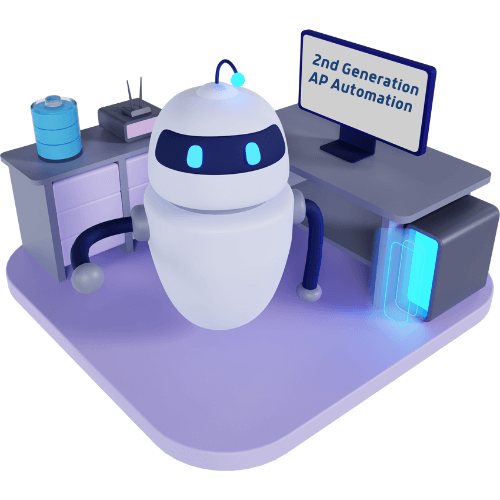Already have AP Automation? Think again
The concept of AP Automation appeared in the late 1990s during a time when advancements in technology were coming thick and fast. It was a time with increasing availability of electronic documents and transactions, and this laid the foundations for automating the AP processes.
The original AP automation involved the digitisation of paper-based documents, such as invoices, through scanning and optical character recognition (OCR) technologies. This allowed for the electronic capture and storage of invoice data, reducing reliance on manual data entry and paper-based processes.
Today, AP automation has become more sophisticated and comprehensive, incorporating advanced technologies such as artificial intelligence, machine learning, robotic process automation (RPA), and cloud computing. These technologies enable intelligent data extraction, automated invoice matching, approval workflows, and seamless integration with other enterprise systems.
Many organisations were early adopters of this digitisation and selected solutions that were the best the market had to offer at that time. Historically, implementing this kind of business transformation involved a wide spread of stakeholders across Finance and IT and a lot of time, effort and disruption. Today’s automation looks like a very different project. With the advancement of cloud computing, there is less reliance on the IT team and the finance team has more control over the configuration of the solution to satisfy their business rules. Conversations for new adopters of the technology involve questions to providers about machine learning and Ai, RPA, SaaS models, sustainability and integration. But organisations that already have automation in place generally accept the ‘upgrades’ given by their provider; the prospect of going out to market to find a new solution, complete due diligence, purchase and implement seems like a daunting task, bringing back reminders of the disruption of automating the first-time round.
So, is this a conversation worth having? What does 2023 AP Automation look like for organisations that have a legacy solution?
Improved Data & Document Capture
Second-generation AP automation solutions use intelligent optical character recognition (OCR), even from complex or unstructured documents, along with integration with e-invoicing networks to capture data including header and line data. Supporting documents, files and/or images can also be captured and uploaded and filed with the associated invoice.
Machine Learning and Artificial Intelligence (AI)
2nd generation AP automation systems also incorporate AI and machine learning capabilities to enhance invoice matching, exception handling, and data extraction. These technologies can learn from past data to improve accuracy and automate decision-making processes.
Intelligent invoice matching
Newer AP automation solutions have enhanced invoice-matching capabilities. They can automatically compare invoice data with purchase orders, contracts, and GRNs, using advanced algorithms to identify discrepancies and exceptions. Query workflow allows discrepancies to be tracked through the business and provides full visibility for the AP team, sending automatic email reminders for query resolution.
Mobile access and approvals
Second-generation AP automation systems offer mobile apps or web interfaces that allow users to access and approve invoices on the go. This enables greater flexibility and faster response times for invoice processing and approvals.
Improved Integration via multiple methods including API
AP automation tools are designed to integrate seamlessly with other enterprise systems, such as ERP (Enterprise Resource Planning) software or financial management systems, and payment platforms. This integration improves data accuracy, reduces manual data entry, and provides a more holistic view of financial operations. Having the ability to connect via an API means that any software that allows connection via this method can be fully integrated with any bespoke software.
Supplier Self-Service Portals
Second-generation AP automation systems offer self-service portals for suppliers, enabling them to submit invoices electronically, track payment statuses, and resolve discrepancies independently. This reduces the need for manual communication and improves collaboration.
Advanced Analytics and Reporting
Improved reporting and analytics capabilities provide detailed insights into AP metrics, such as processing times, invoice volumes, and exception rates. These tools help identify areas for optimisation, monitor performance, and make data-driven decisions. Government reporting is also often included in the standard reporting suite.
Whilst not all solutions or providers can offer all the above, this offers a comprehensive guide of what is currently available. Measuring what your organisation has in place now, and how, if these features were enabled, your automation could be improved is an interesting exercise. For further information on best-of-breed AP Automation please get in touch with the [email protected].





